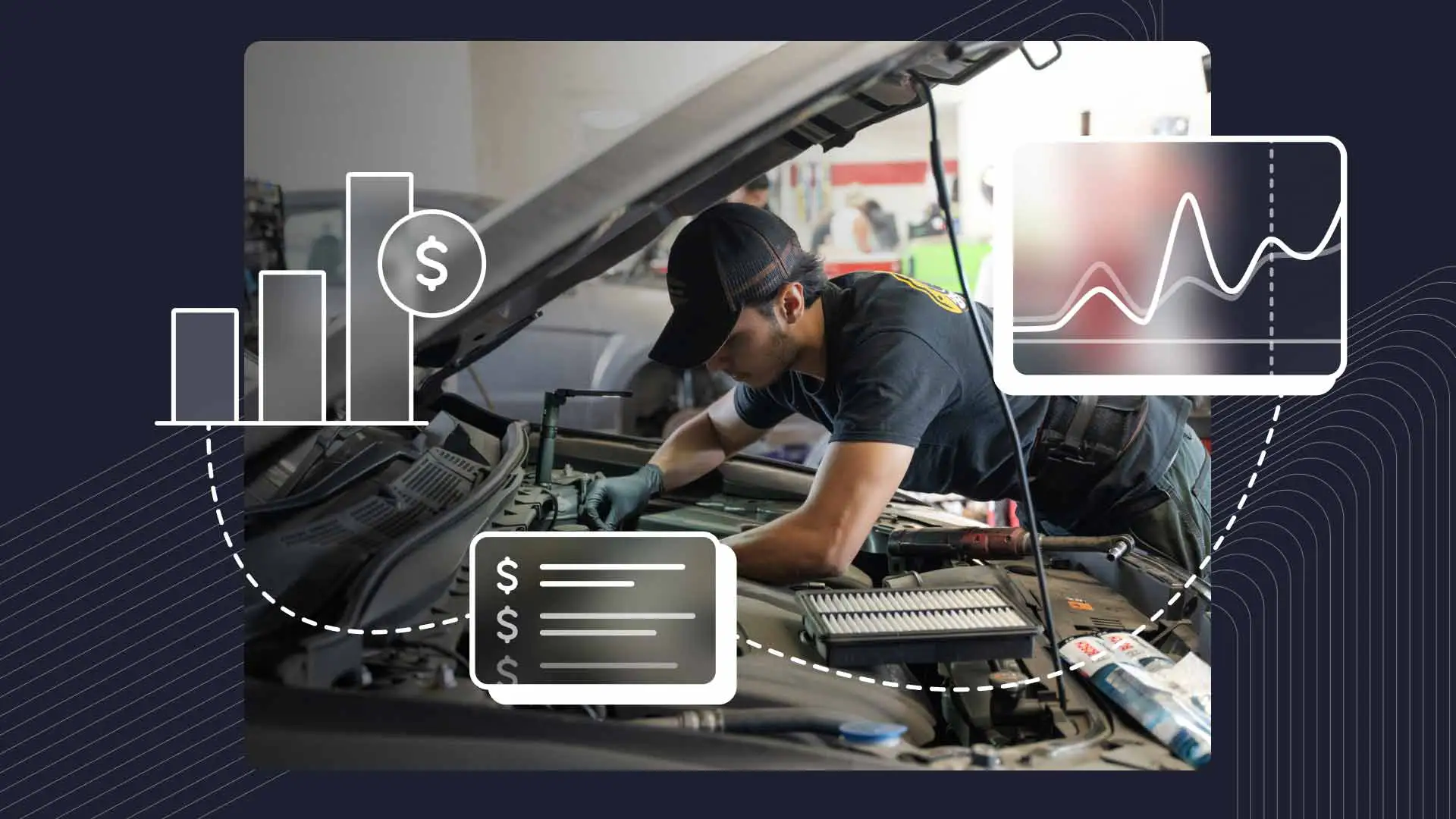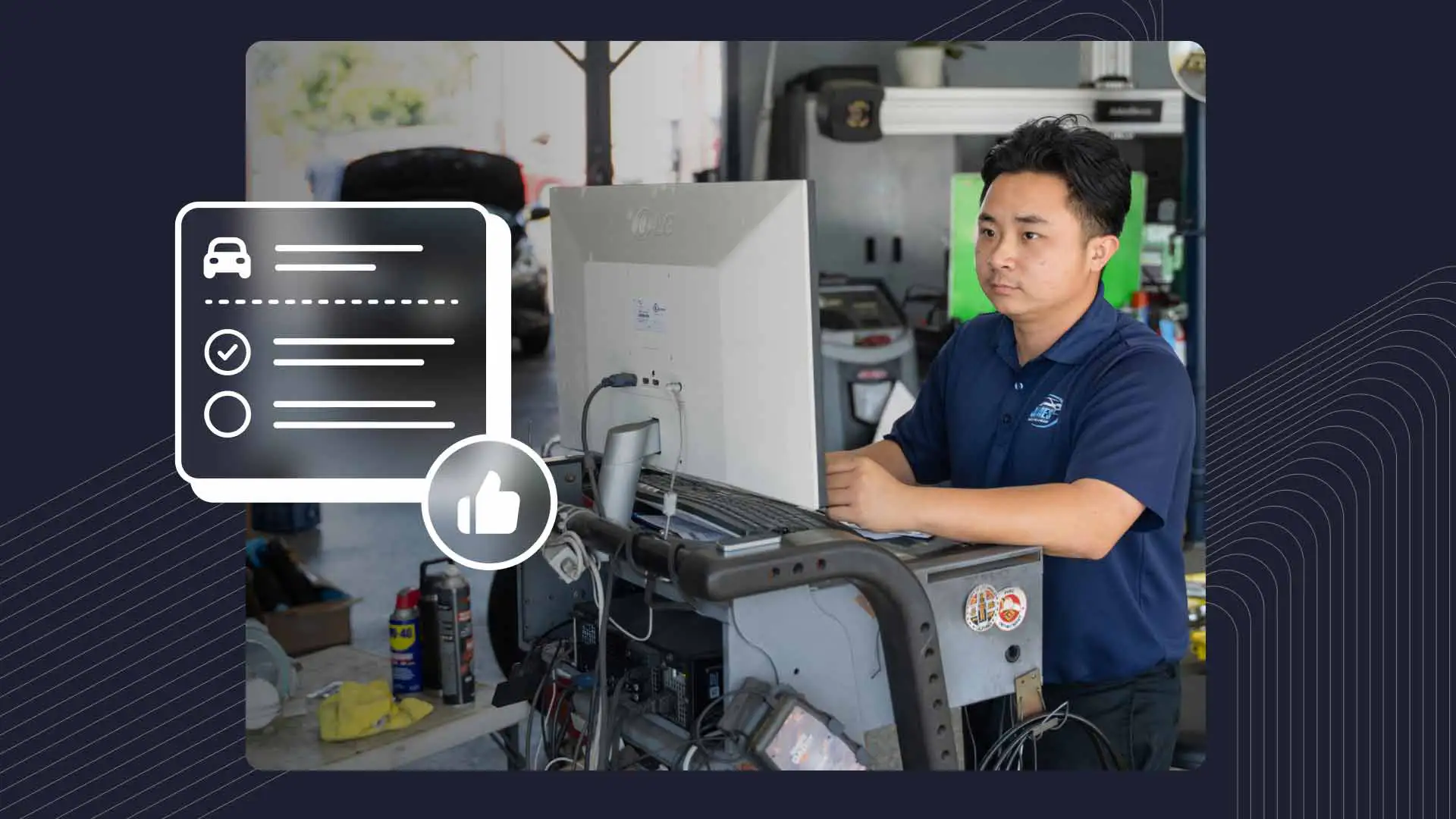This post is a written recap of “Mobile Repair Services,” the very first episode of The Tune Up Podcast. It showcases a thoughtful, entertaining conversation between Shopmonkey employees detailing the viability, implications, and opportunities of shops traveling out to customers to do repairs or maintenance—instead of customers going to shops for this work.
All the usual The Tune Up podcasters were accounted for and present during this roundtable conversation about what very well may be an important future business model for automotive shops. Shopmonkey Director of Training and Enablement Zack Buffum moderated the discussion and was joined by Shopmonkey’s Enterprise Solutions Engineer Jonathan Moretti, Account Executive Gallagher Wilson, Solutions Engineer Michael Bordeaux, and Enablement Specialist Lukasz Konior. Shopmonkey Director of Experience Marketing Justin Simpson rounded out the panel.
After a few preliminary remarks—and accompanying graphics—about the group’s favorite-sounding car engines, these gentlemen addressed the issue at hand.
Mobile Repair is Here to Stay
Buffum cut to the chase immediately by asking if the panelists thought mobile repair services were a passing fad or an indicator of things to come. Gallagher likely put it best by opening that it was “here to stay,” which was perhaps not so surprising. What was a little more surprising is that all of the panelists generally agreed with him.
Moretti mentioned that larger shops either had a significant interest in mobile services or were in the process of rolling out their offerings for it. Gallagher emphasized the degree of convenience this business model provides for customers. Moretti predicted that interest in this phenomenon “won’t wipe out shops,” insinuating that a hybrid model of mobile services and traditional shop services would likely come to pass, especially as shops with maxed-out physical space seek to expand their services. “It would be hard for me to get another building to do more service, but it wouldn’t be that hard for me to get a van,” Moretti insightfully explained.
Types of Services Provided
Another aspect of the mobile paradigm for automotive maintenance and repair work that the group agreed on was that for the near future, it would only involve select services. Konior mentioned recently finding a shop that provided mobile repairs in the Raleigh, NC area that focused on fundamentals like oil changes and tire work, particularly for fleet vehicles, which he described as that business’ “bread and butter.”
Bordeaux mentioned that preventive maintenance is another good area to get going for mobile repair services, which can be much less complicated than other mobile models. To that point, he furthered the discussion to the controversial idea that multiple shops are regularly involved in mobile services contracting different phases of the repair. One shop does the diagnostics at the customer’s vehicle location before “handing it off to a partner shop to actually do the repair.” He quickly followed this statement by admitting “I feel bad for the tech that’s on the receiving end of that [with] no context; ‘we’ve diagnosed the car for you, just fix it.’” This idea does benefit the customer, saving them from doing two trips to their local shop but it can be a risky practice for the repair shop. The team settled on the best practice of using an in-house tech to do this mobile inspection, adding the most value for the customer while also limiting liability for the shop.
Is The Customer Always Right?
Most of the team had strong feelings about this situation. Gallagher expressed the concern that it’s rare for customers to accurately tell shops what’s wrong with their vehicles without the shop checking things out itself. This can be a potential problem that mobile mechanics will have to face.
Let’s say a customer claims that he knows exactly what the car needs to be repaired. Depending on the nature of the repair, this lack of detailed information puts the shop in a risky position if it chooses to perform the repair without first performing a proper inspection. The repair that the customer thinks he needs may be a waste of the technician's time and the customer’s money, leaving the customer unhappy. Gallagher commented, “If that doesn’t fix your problem, what do we do? Because you’re going to probably be upset that I didn’t solve your problem and the reality is I didn’t spend the necessary time to figure out if that was actually your problem.”
That shifted the conversation to what makes a good customer, and how the best ones are those that frequent shops for both maintenance and repairs so that the shop is familiar with the vehicle and its history.
Best Practices
There were a few key takeaways that came about from the discussion. One was that focusing on fleets was a surefire way to find success with mobile repair services, since for fleets and the Heavy Duty (HD) market “every minute an HD vehicle isn’t running it’s not earning money for the business that owns it.”
Also, mobile repair work can be an effective add-on service for shops seeking to grow their services and does not necessarily need to be a stand-alone business. It can complement existing work that a shop is already doing. The general consensus was that tires, brakes, and oil changes were the best areas to start with for this paradigm, partly because this way, there’s a standard (and modest) amount of parts service providers have to bring with them in order to complete the job.




